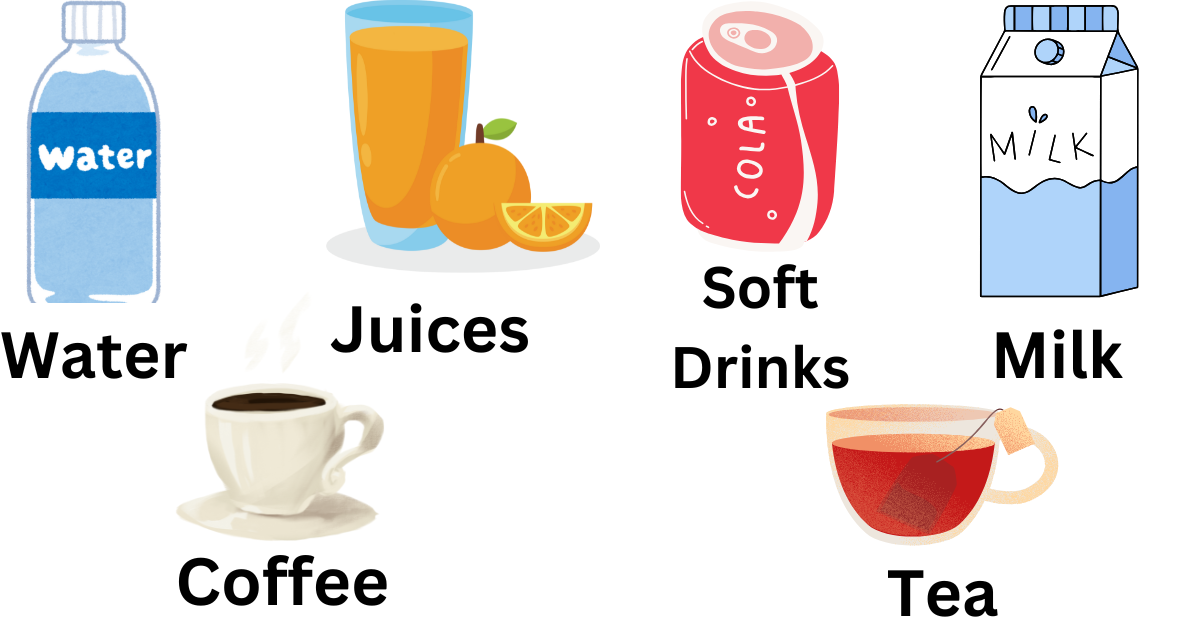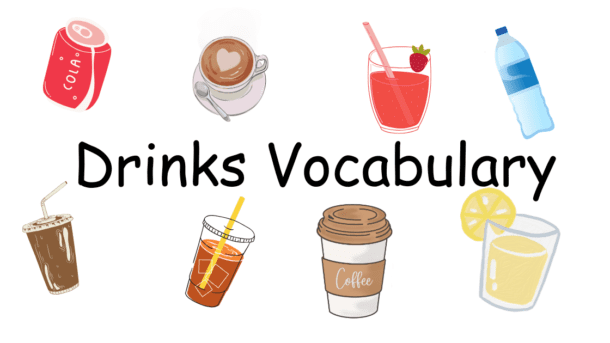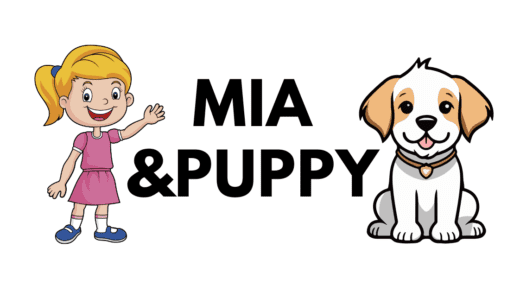Comprehensive Guide to Drinks Vocabulary in English
Drinks vocabulary is an essential part of daily communication. Whether you’re ordering at a café, discussing your favorite beverages, or engaging in social interactions, knowing the terminology can enhance your experience. This lesson will explore a range of drinks vocabulary, their classifications, ingredients, preparation methods, and cultural significance.
Types of Drinks
Non-Alcoholic Drinks Vocabulary
- Water: The most essential drink. Can be categorized further.
- Tap Water: Water from the tap.
- Bottled Water: Water is sold in plastic or glass bottles.
- Sparkling Water: Carbonated water with bubbles.
- Juices: Made from the extraction of fruits or vegetables.
- Orange Juice: A popular breakfast beverage.
- Apple Juice: Sweet and refreshing.
- Vegetable Juice: Often made with tomatoes, cucumbers.
- Soft Drinks: Carbonated beverages with sweeteners and flavors.
- Cola: A dark soda often served with ice.
- Lemon-lime Soda: Clear, citrus-flavored drinks like Sprite or 7-Up.
- Root Beer: A sweet, spiced soda, traditionally brewed.
- Tea: A beverage made by steeping tea leaves in hot water.
- Black Tea: Strong and robust.
- Green Tea: Light and grassy in flavor.
- Herbal Tea: Made from herbs, spices, or fruits.
- Coffee: Brewed from roasted coffee beans.
- Espresso: A concentrated coffee served in small amounts.
- Americano: Espresso diluted with hot water.
- Latte: Espresso with steamed milk and foam.
- Milk and Milk Alternatives: Dairy and plant-based drinks.
- Whole Milk: Rich and creamy dairy milk.
- Almond Milk: A nut-based alternative.
- Soy Milk: Made from soybeans, often used in coffee.
- Smoothies: Blended drinks made with fruits, vegetables, and liquid.
- Fruit Smoothie: Made primarily with fruits and juice.
- Green Smoothie: Includes leafy greens for added nutrition.

Drinks Vocabulary Examples:
- Water
- Examples:
- “I drink eight glasses of water every day.”
- “Can I have a glass of water, please?”
- Examples:
- Juices
- Examples:
- “I love orange juice in the morning.”
- “Grape juice can be very sweet.”
- Examples:
- Soda/Soft Drinks
- Examples:
- “I prefer cola over lemon-lime soda.”
- “She opened a can of soda during the movie.”
- Examples:
- Tea
- Examples:
- “I drink green tea for its health benefits.”
- “Would you like some chamomile tea?”
- Examples:
- Coffee
- Examples:
- “I can’t start my day without a cup of coffee.”
- “Do you prefer your coffee black or with cream?”
- Examples:
- Milk
- Examples:
- “She poured milk over her cereal.”
- “Almond milk is a popular dairy alternative.”
- Examples:
- Smoothies
- Examples:
- “I enjoy a strawberry banana smoothie after my workout.”
- “Healthy smoothies are a great breakfast option.”
- Examples:
- Lemonade
- Examples:
- “Lemonade is perfect for hot summer days.”
- “I made homemade lemonade for the picnic.”
- Examples:
Ingredients Used in Drinks
Understanding the ingredients that commonly appear in drinks can help improve your vocabulary significantly.
- Fruits: Add flavor and sweetness. Common examples include oranges (for juice), lemons (for cocktails), and berries (for smoothies).
- Herbs: Used for flavoring. Mint is common in mojitos, while basil might appear in some cocktails.
- Spices: Ingredients like cinnamon can be found in ciders or holiday drinks.
- Sweeteners: Sugar, honey, and syrups are used to sweeten drinks.
- Dairy: Milk, cream, and yogurt might be incorporated into beverages like lattes and smoothies.
- Carbonation: Sparkling water or soda can add fizz to drinks.
Vocabulary Related to Drinks Preparation and Serving
- Brew
- Definition: To make beverages like tea or coffee by steeping or boiling.
- Example: “I brew a fresh pot of coffee every morning.”
- Shake
- Definition: To mix ingredients vigorously in a shaker, commonly used for cocktails.
- Example: “Shake the cocktail until it’s well mixed.”
- Pour
- Definition: To transfer a liquid from one container to another.
- Example: “Can you pour me a glass of water?”
- Serve
- Definition: To present food or drink to someone.
- Example: “They serve drinks as soon as you arrive at the party.”
- Chill
- Definition: To cool a drink, typically in a refrigerator or with ice.
- Example: “Can you chill the white wine before we drink it?”
- Garnish
- Definition: To decorate a drink with a small item for flavor or presentation.
- Example: “They garnish the cocktail with a slice of lemon.”
Common Drink-Related Expressions
- “On the rocks”
- Meaning: A drink served over ice.
- Example: “I’ll have orange juice on the rocks.”
- “Neat”
- Meaning: A drink served straight from the bottle without ice or mixers.
- Example: “He likes his bourbon neat.”
- “Toast”
- Meaning: A ritual in which participants raise their glasses for a short speech before drinking.
- Example: “They made a toast to the newlyweds.”
- “Bottoms up!”
- Meaning: A cheerful expression used to encourage others to drink.
- Example: “As we clinked our glasses, someone yelled, ‘Bottoms up!’”
- “Cheers!”
- Meaning: An expression of good wishes before drinking together.
- Example: “We all raised our glasses and said, ‘Cheers!’”
Common Drinks Vocabulary/Phrases and Usage
In everyday conversations about drinks, you will often encounter specific phrases and expressions. Here are a few:
- “Can I get a…”: Commonly used when ordering (e.g., “Can I get a coffee?”).
- “I’d like a…”: Another polite way to state your order (e.g., “I’d like a glass of red wine.”).
- “What do you recommend?”: Useful when unsure about what to order.
- “On the rocks”: Refers to serving a spirit over ice.
- “Straight”: Means to serve liquor without mixers (e.g., “I’ll have whiskey straight.”).
- “Mixed”: Used for drinks containing multiple ingredients.
Cultural Context of Drinks
Understanding drinks also involves recognizing the cultural context in which they’re consumed. Different cultures have unique drinks and customs surrounding them:
- Tea Culture: In countries like China and Japan, tea drinking is a significant social activity. Traditional tea ceremonies emphasize the artistry of preparation and presentation.
- Coffee Culture: In Italy, enjoying a coffee is often quick and casual, while in the U.S., it can be a social activity typical of coffee shops and casual gatherings.
- Coffee Ceremonies: In Ethiopia, coffee is prepared and served ceremonially, often taking hours. This practice holds significant social meaning, fostering community bonds and hospitality.
Ordering Drinks
When you go to a café, knowing how to order drinks will enhance your experience. Here is a typical dialogue illustrating the process:
Example Dialogue
Customer: “Hi, could I get a medium cappuccino, please?”
Barista: “Sure! Would you like it hot or iced?”
Customer: “Hot, please, and could you add a shot of vanilla syrup?”
Barista: “Absolutely! That will be $4.50.”
Practice Exercises
To reinforce your understanding of drinks vocabulary, try these exercises:
Fill in the Blanks
- I would like a glass of ______ for my meal.
- My favorite soft drink is ______.
- She ordered a ______ on the rocks at the bar.
Conclusion
Being familiar with drinks vocabulary opens up a world of possibilities in social scenarios and enhances your overall communication skills. Explore the variety of drinks available, try new recipes at home, and practice ordering when out. With this comprehensive guide, you are now equipped to dive into conversations about drinks confidently. Enjoy your beverage adventures in English!




